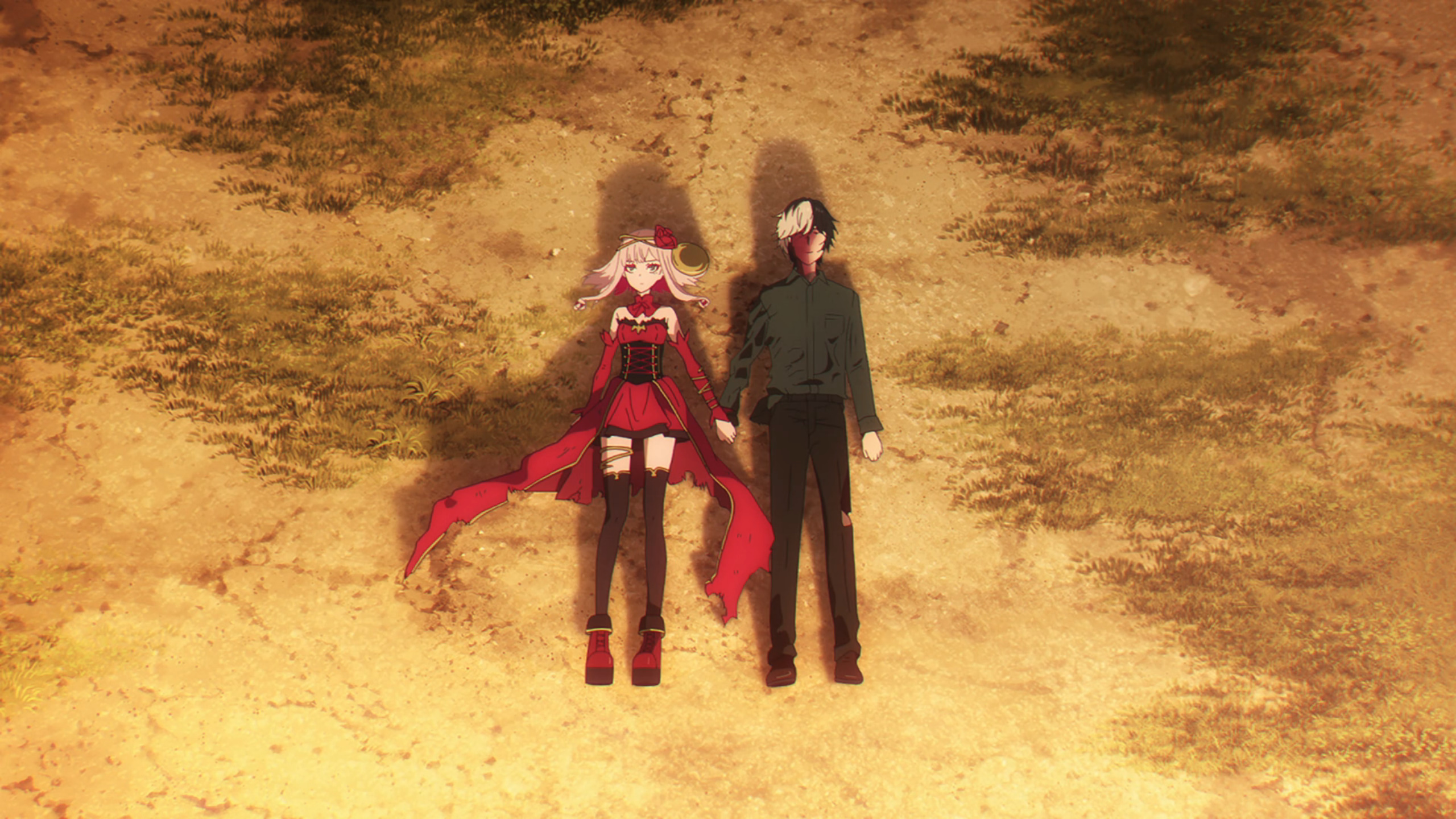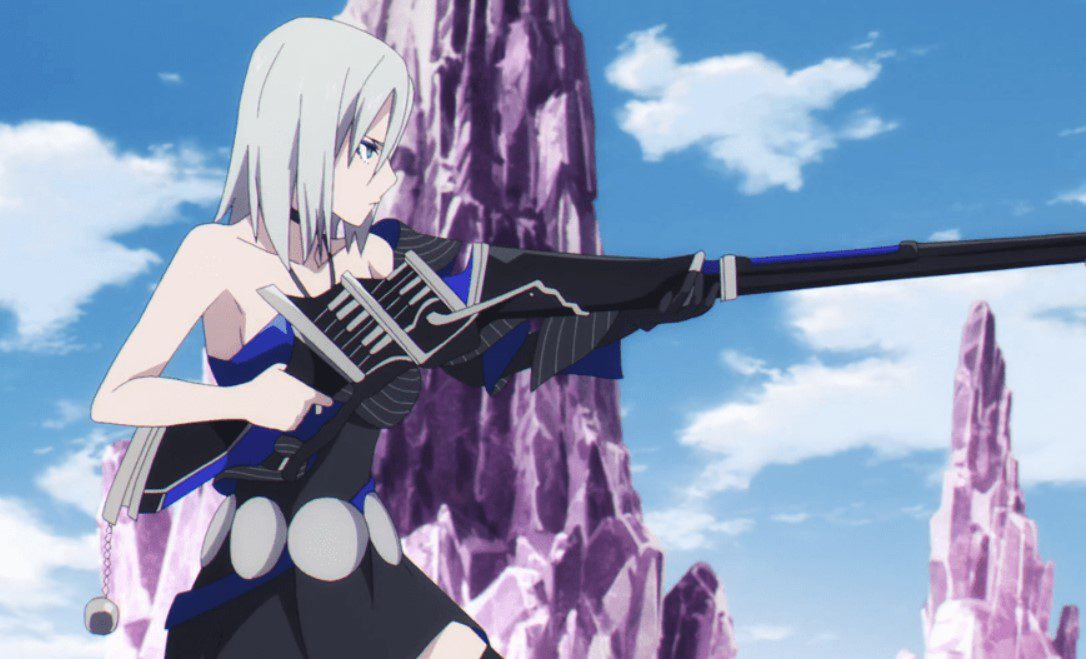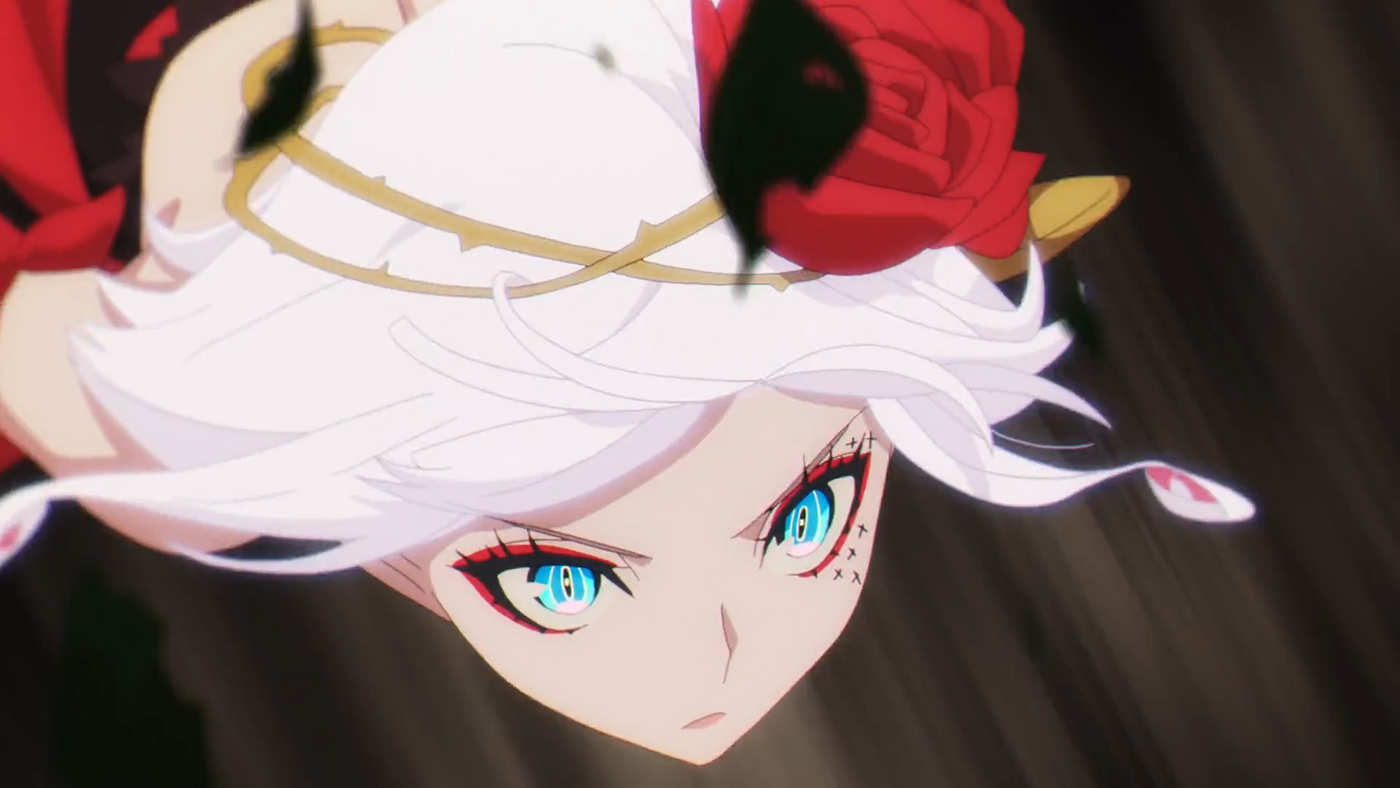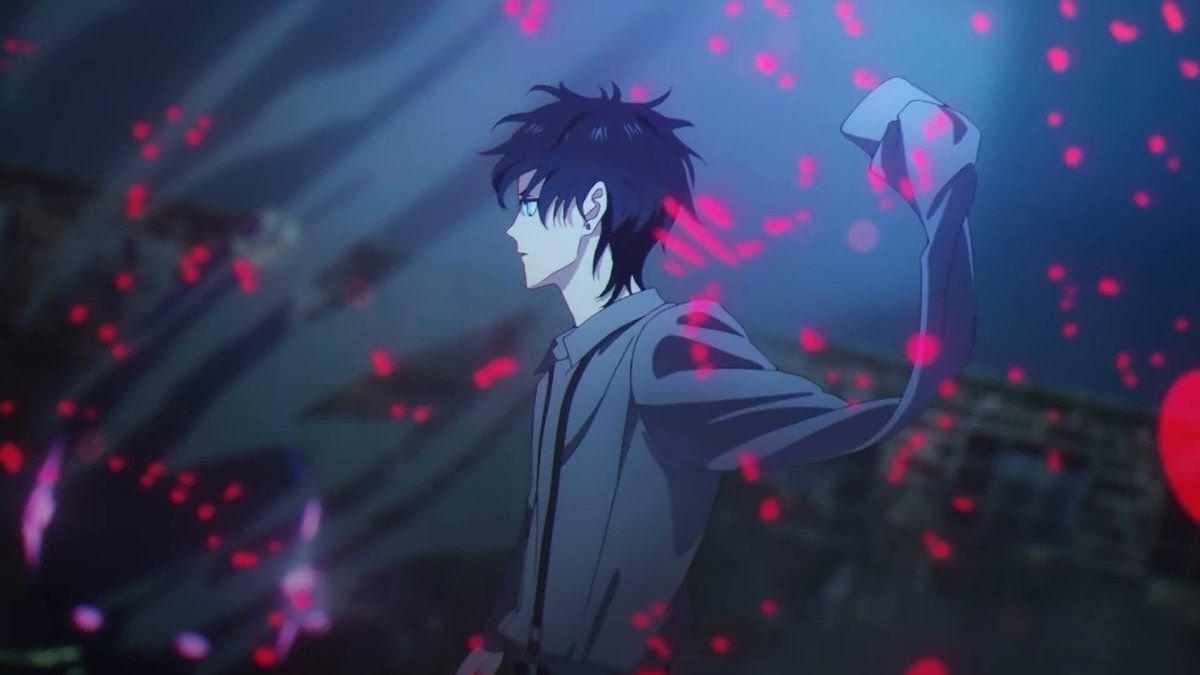Takt op. Destiny is an anime that is quite an anomaly to me. It is the first half of Bandai Namco Arts and DeNA’s Takt op. media project that includes the anime and an upcoming mobile game. The series follows Musicarts and the Conductors who control them as they fight off fictional monster-like aliens known as the D2s. However, because the anime is part of a media project that includes a game, you wouldn’t blame me for thinking it would be just another soulless and empty attempt to promote the primary revenue generator, the mobile game. Although it is hard to ignore the considerable amount of budget and attention given to said promotion. Thankfully though, I was wrong. As Takt op. went above and beyond the necessary to impress me as it is one of the few anime that held my attention and kept it.
![Takt Op.Destiny: Season 1/ Episode 1 “Chapter 1: Conduct - Creed” [Series Premiere] – Recap/ Review (with Spoilers)](data:image/gif;base64,R0lGODlhAQABAAAAACH5BAEKAAEALAAAAAABAAEAAAICTAEAOw==) A Symphony of Passion and Loss
A Symphony of Passion and Loss
Takt op. Destiny takes place in the United States of America years after the historical appearance of monster-like aliens known as the D2s who emerged from a black meteorite that crashed into Earth. A significant trait of these strange aliens (aside from their peculiar looks) is that they absolutely abhor music, so destruction and chaos quickly ensued upon arriving at a music-filled Earth. To combat the creatures, a group known as Symphonica (somehow) is able to create beings known as Musicarts, young women who are the physical manifestation of classical music, who are able to wield the power of music itself alongside their Conductors, the individuals who control them.
The anime follows our young and unfortunate pianist protagonist Takt Asahina. His father was killed in a D2 attack in Boston, and his close friend and romantic interest Cosette is killed on the one day he decided to go outside since his parent’s death. However, the same unfortunate event that killed Cosette prompts the existence of a mysterious Musicart known as Destiny, who manifests in Cosette’s body, linking Takt as Destiny’s conductor in the process. This event serves as a significant catalyst to the anime’s events as Taxt, Destiny, and Cosette’s elder sister, Anna, head to the Symphonica in New York City to make sense of it all and meet several Musicarts, Conductors, and D2s along the way.

An Interesting Hypothetical
An average observer can tell that the anime has a fascinating and somewhat unique concept right off the bat. The idea of powerful fantasy females who are the physical manifestation of classical music to fight otherworldly creatures with the very thing they despise serves as a nice juxtaposition and interesting purpose of conflict in the anime, even if it doesn’t remain that simple in the latter half.
This premise also brought up an interesting hypothetical I couldn’t help but highlight. Imagine a world where music has been completely abolished. The average person can no longer pour their emotions on an instrument, portray their feelings through a song, or try to poorly replicate their favorite song in the shower. This very hypothetical serves as a core concept of Takt op. as music has almost been completely forgotten. However, people still find a way to preserve snippets of what’s that’s dear to them. We see this several times in the anime, like in the Jazz club in episode ten, but we mainly see this through the Takt. Despite all he’s been through, Takt is a character who has always cared about the piano since his father’s death. So much so that it’s become a character trait for him to look for and play a piano wherever he is, no matter what repercussions may come from it.

Effortless Development
And this brings me to the anime’s characters, specifically the dynamic duo, who are given the most focus in the show, especially in terms of development. At the start of the anime, we see Takt’s cold and resentful attitude towards Destiny, who has taken over the body of his friend/ romantic interest. And Destiny, a musicart who was basically just born, is oblivious to his emotions and is only focused on her duty to dispatch the D2s. However, as the anime progresses, this expectedly changes when the pair goes through several dramatic moments together.
Takt becomes more easygoing and determined on his goals as a conductor. He also grows kinder and more considerate towards Destiny by treating her as her own person when she displays her own emotional growth. These characters’ behavior, actions, motivations, and development are displayed throughout the anime in such a decisive and satisfying way that you can’t help but appreciate the amount of attention being put into them.

Off Key
Despite this however, I still found some parts of the anime severely lacking. The most jarring of which is how little thought was put in to explain to the viewers the background stories of the Musicarts and the D2s. While a very brief monolog was done to highlight what they are, it doesn’t do nearly a good enough job of elaborating how they came to be or explaining the details of how their powers worked or how they were built. This case is the same for the D2s. We’re told they came from a black meteorite and nothing else. We aren’t told why they hate music, the size of the meteorite, and how many D2s it contained. While I understand that I may be a bit too nit-picky and that the anime had a lot of limitations with the number of episodes it had to work with, they are nevertheless questions that plagued my mind that I never got answers to.
Another probable result of said imitations is how, despite seeing numerous Musicarts throughout the anime, only five were given any sort of attention, half of which show up in the latter half of the anime. It’s a shame too, as many of these characters looked genuinely interesting, but we were never able to learn their story.
An Outstanding Production
Despite the criticisms, Takt op. is still a great anime with incredible quality. As an anime produced by MAPPA and Madhouse, two highly renowned big-name studios, I had no doubt in my mind that the anime would be a technical marvel, and I was right. The animation during high octane moments is fluid, crisp, and jaw-dropping despite how short they lasted. These scenes are executed so well that it’s honestly hard to keep your eyes away from the screen once they begin. The character designs from LAM (original character designer) and Reiko Nagasawa are especially my favorite aspect of the anime’s visuals, specifically the dynamic appearance of the Musicarts including their unique hairstyles, eye patterns, colorful dresses, and cool weapons. The anime also sported some impressive mesmerizing visual effects, specifically when the Musicarts would use their unique powers.
The performance by Kōki Uchiyama and Shion Wakayama as Takt and Destiny respectively was another excellent aspect of the anime, as both played their roles quite well as the robotic Musicart and jaded Conductor. The soundtrack is also exceptional, featuring several great piano songs, but the melancholic opening song “Takt” by Ryo (supercell) feat. Mafumafu, gaku was my favorite amongst them all.

Final Thoughts
All in all, Takt op. is overall a well-produced viewing experience. While the hollow plot is its most debilitating aspect, the characters, interactions, and development were done well enough to enjoy the anime regardless.
Takt op. Destiny is available to stream now on Crunchyroll.
Have you watched Takt op? What do you think of our review? Let us know your thoughts in the comments section below.


















































![Takt Op.Destiny: Season 1/ Episode 1 “Chapter 1: Conduct - Creed” [Series Premiere] – Recap/ Review (with Spoilers)](https://wherever-i-look.com/wp-content/uploads/2021/10/Cosette-and-Takt-Takt-Op.Destiny-Season-1-Episode-1-Chapter-1-Conduct-Creed-Series-Premiere.jpg) A Symphony of Passion and Loss
A Symphony of Passion and Loss






